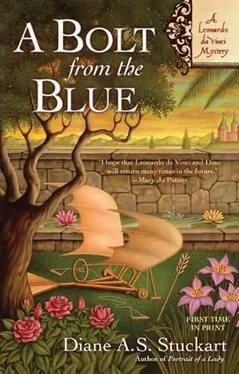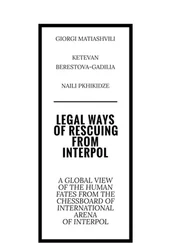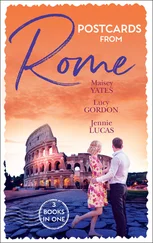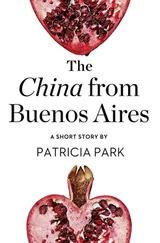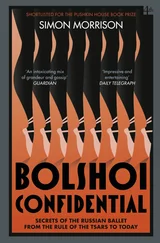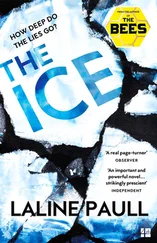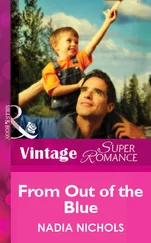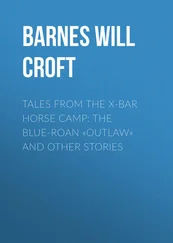Diane Stuckart - A Bolt from the Blue
Здесь есть возможность читать онлайн «Diane Stuckart - A Bolt from the Blue» весь текст электронной книги совершенно бесплатно (целиком полную версию без сокращений). В некоторых случаях можно слушать аудио, скачать через торрент в формате fb2 и присутствует краткое содержание. Год выпуска: 0101, Издательство: PENGUIN group, Жанр: Исторический детектив, на английском языке. Описание произведения, (предисловие) а так же отзывы посетителей доступны на портале библиотеки ЛибКат.
- Название:A Bolt from the Blue
- Автор:
- Издательство:PENGUIN group
- Жанр:
- Год:0101
- ISBN:нет данных
- Рейтинг книги:5 / 5. Голосов: 1
-
Избранное:Добавить в избранное
- Отзывы:
-
Ваша оценка:
- 100
- 1
- 2
- 3
- 4
- 5
A Bolt from the Blue: краткое содержание, описание и аннотация
Предлагаем к чтению аннотацию, описание, краткое содержание или предисловие (зависит от того, что написал сам автор книги «A Bolt from the Blue»). Если вы не нашли необходимую информацию о книге — напишите в комментариях, мы постараемся отыскать её.
A Bolt from the Blue — читать онлайн бесплатно полную книгу (весь текст) целиком
Ниже представлен текст книги, разбитый по страницам. Система сохранения места последней прочитанной страницы, позволяет с удобством читать онлайн бесплатно книгу «A Bolt from the Blue», без необходимости каждый раз заново искать на чём Вы остановились. Поставьте закладку, и сможете в любой момент перейти на страницу, на которой закончили чтение.
Интервал:
Закладка:
And now it was I-Delfina, and not Dino-who stood here alongside Leonardo, with Tito and Constantin only memories.
The Master gave me no time to linger on those doleful thoughts, however, for he began an eager explanation of the work that had already been done. I listened intently, aware this might be the last of his lectures I ever heard. Much of the background work, I knew, had been completed by Paolo and Davide, who could cleverly match the Master’s style and so had been charged with the fresco’s lesser details. The main figures had been painted by Leonardo, though I wondered in some amazement when he’d found the time. And then, with an inner smile, I guessed that he had likely stayed up all the previous night, gripped by one of those furies of creativity that so often held him captive for hours at a time.
I recognized the scene directly before us, for it was the one that I had found faintly shocking when I’d first perused the Master’s sketches. But, seeing the idea brought almost fully to life, I began to understand Leonardo’s intent.
This particular scene from the missing years of Christ’s young adulthood was, as Leonardo envisioned it, a time of great learning. Surely he had been a voracious scholar, familiarizing himself with the teachings of many lands and many cultures. And thus it was one of these exotic lands that the Master depicted.
Just as in the sketch I’d seen, the painting’s background illustrated a land of blazing sun and bright colors. The buildings and temples were portrayed with exotic detail, from the rows of jewellike tiles painted around every window and door, to the golden domes atop many of the taller edifices.
With a smile, I noted that among the flurry of palm trees and grasses that dotted the landscape, tigers lurked and monkeys scampered. Parrots adorned in feathers of green and red dangled from a dozen tree branches, their curved beaks opened to emit what would have been a deafening chorus had they been real and not plaster. I even spotted a thick serpent curled upon a rock, its upper body stretching almost as tall as the humans nearby who appeared not to notice its menacing presence.
But, delightful as the scene was at first glance, it had far deeper purpose.
I had studied with the Master long enough to understand his theories of composition. I knew he aligned every painted boulder, every tree, every minor figure, so that the arrangement formed lines that drew the viewer’s eye inexorably to the painting’s central subject. But had he simply scattered the rocks and parrots and temples heedlessly about this particular scene, every eye still would have been drawn to the painted figure that sat in silent contemplation, unaware of the splendid distractions about him.
The traditional golden nimbus about his bowed head identified the figure as that of the Christ. But this version of our Lord was far different from any I’d ever seen. While not as young as the boy who had astounded his elders in the temple, neither was he the Christ of middling years already embarked upon his glorious mission of salvation. Instead, the dark-haired youth appeared little older than I, his handsome face with a hint of a beard retaining traces of the soft roundness of boyhood.
He wore but a snowy loincloth, revealing the tanned limbs and broad chest of a young man who engaged in physical work. . as a carpenter, perhaps.
But most compelling was his pose. Legs crossed as if seated upon the ground, he instead appeared to float several feet above it, eyes shut and head bent in prayerful attitude.
Not surprisingly, a crowd had gathered around him to observe this miracle. Men and women, boy and girls, dark-skinned and light, they appeared to have come from many lands. Some knelt, and others stood. . while a few had prostrated themselves, hands over their heads lest their unworthy eyes glimpse such glory. All were united, however, in the looks of joyful awe upon their faces as they bore witness to this marvelous sight.
“It is beautiful,” I breathed, swept by awe of my own as I took in every detail.
Appearing gratified by my compliments, the Master smiled. “It is a minor piece,” he said with a casual wave of his hand, “though I am pleased with it, nonetheless. But I did not bring you here to admire what I have done. Rather, I intend to put my apprentice Dino to work.”
When I gave him a puzzled look, he pointed to a section of blank plaster not far from the painted image of the young Christ. Perhaps half the size of a giornata -the traditional amount of wall space that could be painted in a single day before the fresh plaster dried-the empty space was strangely out of place amid this finished work. Even the plaster appeared recently applied. . as I suspected that it had been, from the telltale flecks of white I noticed on the Master’s left sleeve.
“You will recall that, before all this sad business happened, I told you it was time for you to put aside the plaster blade and pick up a brush. And so, I have saved this spot for you,” he said, pointing to the unblemished square.
I was aware that my mouth had dropped open in a most unseemly manner. “You-you wish me to finish a portion of your fresco?” I finally managed, hardly daring to believe this could be so. When he nodded, I could only shake my head in return.
“But what shall I paint?”
“Whatever you wish. The spot is yours to do with as you will. Everything you need is already here.”
He gestured to a small table, upon which had been laid out jars of fi nely ground pigment, along with a jug of water and a bowl of fresh egg yolks. Combined, those simple ingredients would make the soft shades of tempera that would seep into the plaster and bring it to life. A row of shells, shallow with pearllike inner bellies, waited to be used as dishes for each color. Beside them, a short vase held brushes of all sizes.
“Do not tarry,” he went on, idly picking up a jar of pigment and then putting it aside. You have but a few hours before the plaster dries.” Before I could make a reply to that, he turned and strode out the chapel door, leaving me alone with the fresco.
I stood transfixed for several long moments, staring at the blank plaster and wondering again how I could possibly fill it. But as I gnawed at my lip in frustration, fearful lest I disappoint the Master in this final task, a familiar voice seemed to speak in my head.
It’s easy, Dino, I heard Constantin’s soothing words, sounding as real as if he were standing beside me. Just paint what you know. . Paint from your heart.
And suddenly I knew what I was meant to depict upon that pristine square of plaster. Smiling, I pulled my tunic over my gown and reached for the bowl of egg yolks. Piercing each yellow globe, I poured their contents into the various shells. Carefully, I added water and pigment, until each new mixture of tempera was the shade and consistency that I sought. Then, taking up a soft brush, I began to paint.
It was well into the afternoon when I put down the brush a final time. Stripping off my tunic, I stepped back to survey my work. Though my hands and arms ached with the hours of effort, and my injured leg throbbed from standing upon the cold stone floor, I felt a swell of excited satisfaction. Surely the Master would be pleased, I told myself. . but if not, somehow it mattered little. I had accomplished what I had set out to do, and I could point with no little pride to this small bit of fresco as being my finest work.
Still, I spared a final critical eye for my painting. I had taken care to blend my background to the surrounding fresco, so that it joined seamlessly with the rest of the scene. Each color had been applied with care, layered one atop another with painstaking precision. But most important was the trio of male figures I had painted within that small landscape. They had sprung from my brushes with a skill I’d not realized I possessed, glowing with life upon what had once been but a blank square of plaster.
Читать дальшеИнтервал:
Закладка:
Похожие книги на «A Bolt from the Blue»
Представляем Вашему вниманию похожие книги на «A Bolt from the Blue» списком для выбора. Мы отобрали схожую по названию и смыслу литературу в надежде предоставить читателям больше вариантов отыскать новые, интересные, ещё непрочитанные произведения.
Обсуждение, отзывы о книге «A Bolt from the Blue» и просто собственные мнения читателей. Оставьте ваши комментарии, напишите, что Вы думаете о произведении, его смысле или главных героях. Укажите что конкретно понравилось, а что нет, и почему Вы так считаете.
